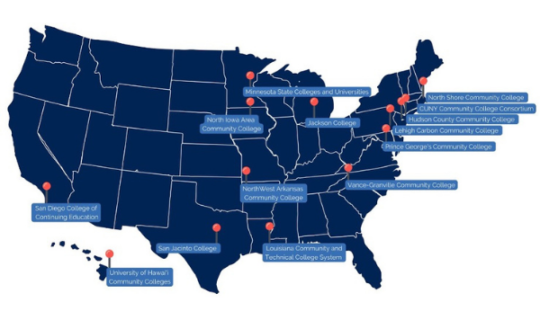Resource: A More Unified Community College
Strategies and Resources to Align Non-Credit and Credit Programs
Community colleges have long held dual missions of preparing workers in their local communities and preparing students for transfer to bachelor’s degree programs at four-year institutions. However, as community colleges developed, these two missions diverged into separate tracks, with one focusing on non-credit workforce training, and the other focusing on degrees and transfer. While each mission is important to sustain, it has resulted in a bifurcated institutional structure that does not equitably serve and prepare all students for workforce opportunities and career advancement.
A More Unified Community College: Strategies and Resources to Align Non-Credit and Credit Programs is a compilation of research, strategies, and examples of success in the field to support community colleges in pursuit of more equitable student experiences and outcomes. This new resource contains:
- Background on the critical importance of aligning credit and non-credit programming at community colleges
- A new framework that systems and institutions can use to facilitate alignment
- Four different starting points for institutions to begin implementing the framework, each accompanied by a case study highlighting this work in action
- Three distinct Getting Started Guides for institutions and systems; states; and administrators, faculty, and staff
Download the full report along with standalone case studies, Getting Started Guides, and an executive summary below.




